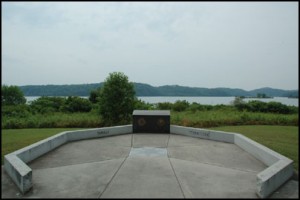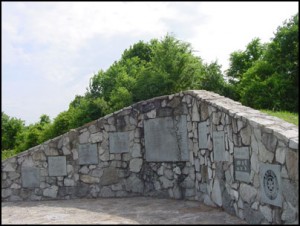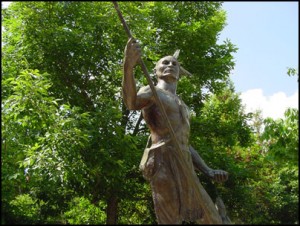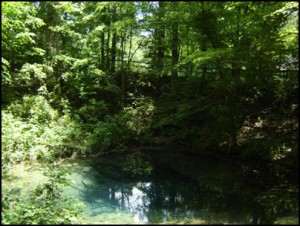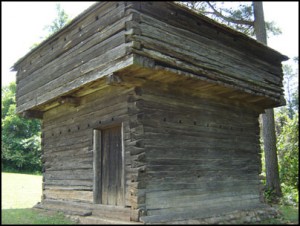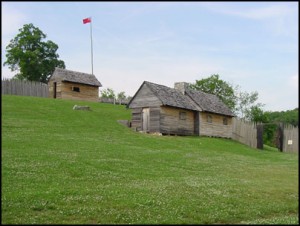With the erosion of the Treaty of Hopewell (1785) the Cherokee saw their boundaries invaded by US settlers. The Chickamuaga group of Cherokee, led by Dragging Canoe, were in revolt, raiding white settlements and leaving all of the Cherokee vulnerable to retribution attacks. In 1791 the Treaty of Holston was signed in an effort to
Genealogy Queries for "tennessee"
Tanasi
Along with neighboring Chota, Tanasi was one of the two Overhill towns recognized as a “capital” of the Cherokee Nation during the 1700s. However, to most it is best known as the namesake for the state of Tennessee. The spelling variation of Tennessee first appeared on a map in 1762. Later in 1796, the nation’s
Sequoyah’s Birthplace Memorial
Sequoyah was born in the 1770s in the Cherokee village of Tuskegee on the Tennessee River. His name Sikwo-yi is Cherokee for “pig’s foot,” which leads many to believed that he was crippled. Sequoyah was a mixed-blood Cherokee. His mother, Wureth, was a member of the Paint Clan. His father, Nathaniel Gist, was a Virginia
Ross Landing
Chattanooga, the 4th largest city in Tennessee with over 155,000 residents, has its roots in Cherokee history. In 1776, Dragging Canoe and the Chickamauga settled here at the foot of Lookout Mountain. Then in 1816, John Ross, later elected Prinicipal Chief, established a trading post here and the spot soon became known as Ross’s Landing.
Red Clay State Historic Park
In 1830 the US Congress, at the behest of President Andrew Jackson, passed the “Indian Removal Act.” With this act, the US intended to removal all Indian people to Indian Territory, land west of the Mississippi River. Removal was “voluntary” in as much as the US government had to arrange removal by way of a
The Passage
The Passage is a pedestrian link between downtown Chattanooga and the Tennessee River at Ross’s Landing (the city’s original settlement, named for the Cherokee Chief John Ross). The project is the nation’s largest public art project celebrating Cherokee history and culture. The piece, created by Cherokee Artists Gadugi (Cherokee Artists Working Together) of Oklahoma, was
Nancy Ward’s Gravesite
Nancy “Nanye-hi” Ward was a Cherokee woman born in the late 1730s in the Cherokee town of Chota. She was the niece of leader Attakullakulla and cousin of war leader Dragging Canoe. In 1755, Nanye-hi, still just a teenager, was married to Kingfisher and fighting side-by-side with her husband at the Battle of Taliwa against
Fort Marr Blockhouse
Fort Marr (also called Fort Morrow) was built in 1814 as a supply depot for troops during Andrew Jackson’s campaigns against the Creek Indians. It was later abandoned, only to be regarrissoned in 1837 for troops managing the Cherokee removal. Troops stationed at Fort Marr were tasked with collecting Cherokees from their homes in the
Fort Loudoun
Fort Loudoun was built in 1756 by the British Colony of South Carolina during the French and Indian War. The Fort was intended to counter a growing threat by the French. However, its close proximity to several Overhill Cherokee towns, including Tanasi (the namesake for Tennessee) and Tuskegee (the birthplace of Sequoyah, inventor of the
Clingmans Dome
Clingmans Dome towers at 6,643 feet and stands as the highest point in the Smoky Mountains National Park, the highest point along the Appalachian Trail, the highest point in Tennessee, and the second highest point east of the Mississippi river. The Cherokee know the mountain as Kuwahi or Mulberry Place and consider it a sacred

